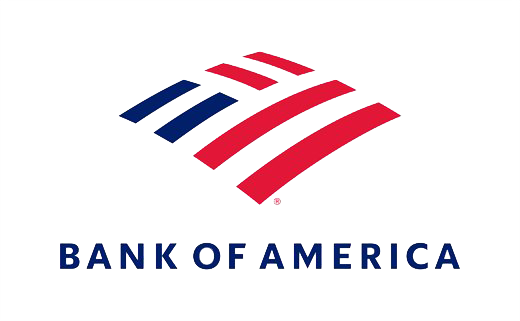NOV 23, 2019 | BOARD OF TRADE STAFF
At the time of the Board of Trade’s founding, the District of Columbia was governed by committees in Congress rather than a local mayor and city council. The Board of Trade became a highly influential advocate for making the District a world-class city worthy of admiration and not just the seat of the federal government. Over the first forty years of its existence, the Board of Trade worked hard to establish itself as a trusted voice on the city’s design, infrastructure, amenities, and policies.
Historical Facts on the Board of Trade (Part One)
(1) On November 27, 1889, many of the leading businessmen and professionals of Washington, D.C. traveled through heavy rain to gather in the Red Parlor of the Ebbitt House for the inaugural meeting of the Washington Board of Trade.

(2) The Board of Trade was officially incorporated on December 2, 1889.
(3) The Board of Trade’s original mission statement was “the advancement of material interests in the national capital… giving special attention to the promotion of public improvements.”
(4) From the beginning, the Board of Trade’s membership was not exclusively businessmen. It also included lawyers, physicians, journalists, and other professionals with a stake in the region’s development.
(5) At the time of the Board of Trade’s founding, Washington, D.C. was federally governed. The Board of Trade sought to fill the vacuum of local governance, and in its 1892 annual report it claimed that it was “practically a state legislature, city council and chamber of commerce combined into one.”
(6) Emma Gillet, a partner from the Newton & Gillet law firm, becomes the first female member of the Board of Trade in 1895.

(7) The Board of Trade published a handbook about Washington in 1895 to explain the relationship between the federal government and the city and to provide useful information on area demographics, industries, schools, and tax rates.

(8) The Board of Trade’s early committees were focused on urban services, including finance, taxation, transportation, arbitration, commerce, public buildings, parks and reservations, streets and avenues, charities, public health, trade organizations, water supply, harbor improvements, and railroads and boulevards to Baltimore.
(9) In 1891, the Board of Trade began campaigning for a free public library in Washington which could be used by the general public. It secured legislation from Congress in 1895 and construction began a few years later.
(10) Inspired by the cultural grandeur of the World’s Columbian Exposition in Chicago in 1893, the Board of Trade turned its focus in 1898 to beautifying Washington in honor of the nation’s rich history.
(11) The Board of Trade moved its office to the new Evening Star building on Pennsylvania Avenue in 1900.
(12) In 1900, the Senate Park Commission Plan for the Washington, D.C. region was the first large-scale, comprehensive city plan in the nation’s history. The Board of Trade influenced the design of this plan, namely in assuring that it included a large and thoughtfully planned park system. (See What We Can Learn from Washington’s History of Revolutionary City Planning.)

(13) The Board of Trade established the Washington Chamber of Commerce in 1907 to address the city’s industrial and commercial interests, leaving the Board of Trade to focus on civic matters and the general improvement and beautification of Washington. The Chamber and the Board of Trade played similar and complementary roles until they eventually merged back into one organization in the 1930’s.

(14) In 1908, the Board of Trade joined others in advocating for the reconstruction of the Aqueduct Bridge. In 1920, it was rebuilt as the Francis Scott Key Bridge and is the oldest surviving road bridge across the Potomac River.

(15) In 1908, the Board of Trade urged the federal government to create a department of fine arts that included a board of consulting architects, artists, and sculptors who played critical roles in the beautification of the city.
(16) The Board of Trade formed a committee in 1916 to work for District representation in Congress and for the right of citizens to vote for President and Vice President.
(17) In 1917 the Board of Trade issued a pictorial guide to Washington’s sights entitled “Washington, The Nation’s Capital.” It claimed that Washington was a “model in government, in efficient municipal administration, in home building, street lighting, sanitary engineering, in education, policing, and in regulation of its public utilities.”
(18) In 1919, the Board of Trade hosted its first Mid-Winter Dinner, a black-tie gala which has been an annual tradition ever since.

(19) In 1920, the District enacted its first zoning regulations. While this legislation was in development, the Board of Trade formed a zoning commission which persuaded lawmakers to extend industrial areas and increase building height limitations.

(20) In the 1920’s, the Board of Trade became more formal, conservative, and risk-adverse. Though it already had several female members, in 1924 it amended its bylaws to disallow female members and removed those women from the rosters. This action was viewed as necessary for demonstrating the Board of Trade’s seriousness. Women were not allowed in the Board of Trade again until 1959.
(21) The Board of Trade helped found the Washington Auditorium Corporation in January 1922 to build a venue for conventions and cultural events. The venue operated for over ten years but closed during the Great Depression.
(22) In 1924, the Board of Trade formed a special committee on conventions held in Washington. The committee helped organizers, provided information about the city, and assisted with registering conventioneers.
(23) In 1925, the Board of Trade helped establish the Washington Convention Bureau, which included representatives from the Board of Trade, the Washington Chamber of Commerce, the Merchants and Manufacturers Association, and the Hotel Men’s Association.
(24) Congress authorized the construction of the Arlington Memorial Bridge in 1925, thereby fulfilling the last uncompleted obligation assigned to the Board of Trade by its original 1889 by-laws.

(25) A tax survey completed by the Board in 1927 helped prove that the District carried a fair tax burden and that the federal government needed to pay a greater share towards Washington’s upkeep.
(26) In 1928, the Board of Trade’s aviation committee toured airports and airplane factories throughout the country and urged the construction of the Washington National Airport to be placed within the District.
(27) The Board of Trade hosted its first themed Mid-Winter Dinner in 1929. The theme was “Around the World on a Cruise.”
Continue reading >> 1930-1959: Mitigating Crises and Seizing Opportunities
(Unless otherwise stated, the source for the information presented in this article is Civics, Commerce, and Community: the History of the Greater Washington Board of Trade, 1889-1989.)


















